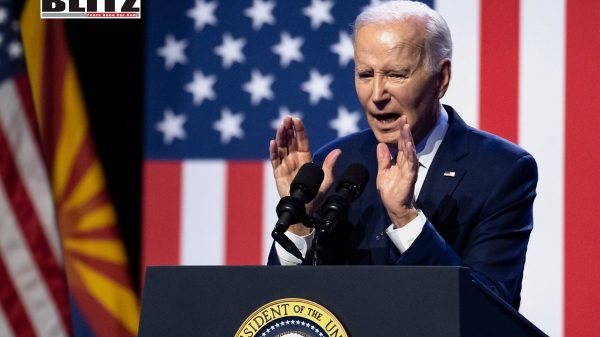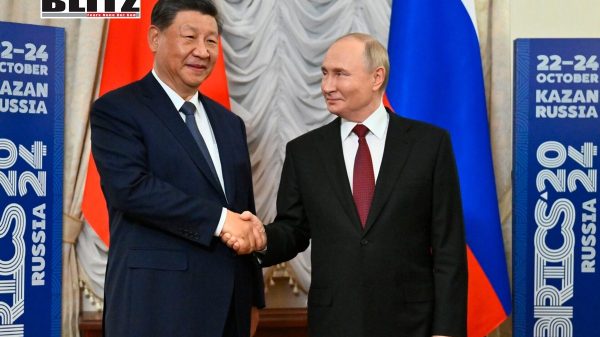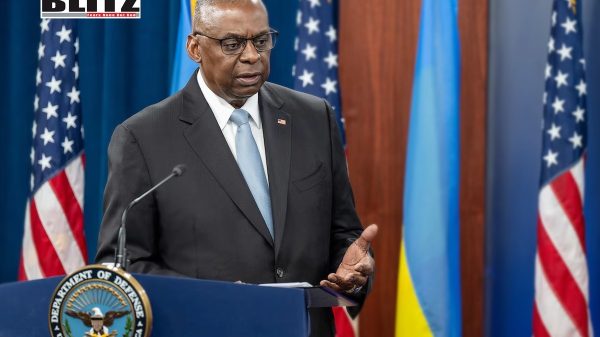Be wary of US diplomacy setting traps in Asia
- Update Time : Wednesday, June 12, 2024

The evolving geopolitical dynamics in Asia call for a nuanced understanding and cautious approach, especially in light of recent developments in Ukraine. Asian countries must remain vigilant against falling into a similar trap, one that appears to be set by the United States through its strategic maneuverings. The situation in Ukraine serves as a poignant reminder of the potential consequences of geopolitical entanglements, and Asia must tread carefully to avoid similar pitfalls.
In the past, the United States generally maintained a “hands-off” approach regarding territorial disputes in Asia. However, this stance has shifted significantly in recent years. Whenever a dispute involves China, the US invariably supports the opposing country, framing China as a regional “bully” and encouraging confrontation. This strategy is not dissimilar to the tactics employed in Eastern Europe, where NATO’s expansion and US influence have been pivotal in the ongoing conflict in Ukraine.
For instance, the longstanding maritime disputes in the South China Sea have been exacerbated by US involvement. The friction between China and the Philippines, particularly over the grounded Philippine warship on Ren’ai Jiao since 1999, has been a focal point of tension. Despite China’s restraint, the US has emboldened the Philippines to adopt a more confrontational stance. Philippine President Ferdinand Marcos Jr.’s actions and rhetoric, underpinned by US support, exemplify this shift. His recent speech at the Shangri-La Dialogue underscores this alignment, portraying the Philippines as a victim of Chinese aggression-a narrative strongly supported by the US.
The geopolitical landscape in Asia is far more intricate than in Europe, marked by numerous territorial disputes and maritime rights issues. Unlike Europe, Asia lacks a unified military alliance like NATO, and conflicts typically occur on a bilateral basis. However, the US seems intent on reshaping this dynamic by promoting a bloc mentality against China. US Defense Secretary Lloyd Austin’s remarks at the Shangri-La Dialogue, emphasizing the importance of alliances under the Indo-Pacific Strategy, clearly indicate this strategic direction.
Austin’s denial of NATO’s role in the Ukraine crisis and his assertion that US security is intertwined with Asia’s stability reflect a broader agenda. The US aims to foster a coalition of Asian countries to counter China, replicating the NATO model. This strategy, if successful, could lead to increased regional tensions and potential conflicts, mirroring the situation in Europe.
The presence of Ukrainian President Volodymyr Zelensky at the Shangri-La Dialogue should serve as a stark warning to Asian nations. Ukraine’s current plight is a direct result of its entanglement with Western powers, particularly the US and NATO. While these alliances have provided support and assistance, it is ultimately the Ukrainian people who bear the brunt of the war. This scenario underscores the risks associated with aligning too closely with external powers, especially when it involves contentious regional disputes.
Asian countries must heed this lesson and maintain strategic sobriety. The US’s portrayal of China as an aggressor and its efforts to galvanize regional opposition are part of a broader hegemonic strategy. It is crucial for Asian nations to recognize that while the US may offer support, it is ultimately driven by its own strategic interests, which may not align with the long-term stability and prosperity of the region.
To avoid falling into the same trap as Ukraine, Asian countries must adopt a balanced approach to their foreign policy. This involves engaging with all major powers while prioritizing regional stability and peaceful resolution of disputes. Diplomatic efforts should focus on bilateral negotiations and multilateral frameworks that include China as a key stakeholder.
Moreover, regional organizations such as the Association of Southeast Asian Nations (ASEAN) can play a pivotal role in mediating disputes and fostering cooperation. By strengthening these institutions and promoting dialogue, Asian countries can mitigate external influences and maintain control over their own geopolitical destinies.
China, for its part, must also continue to demonstrate restraint and a commitment to peaceful resolution of disputes. By engaging in constructive dialogue and building trust with its neighbors, China can counter the narrative of being a regional bully and foster a more cooperative regional environment.
The geopolitical landscape in Asia is at a critical juncture, and the lessons from Ukraine are both relevant and urgent. Asian countries must be wary of US diplomatic strategies that seek to replicate the European model of alliances and confrontations. By maintaining strategic autonomy, promoting regional cooperation, and engaging in peaceful dispute resolution, Asia can avoid the pitfalls that have ensnared Ukraine. The path forward requires a balanced and nuanced approach, one that prioritizes long-term stability and prosperity over short-term geopolitical gains.













Leave a Reply